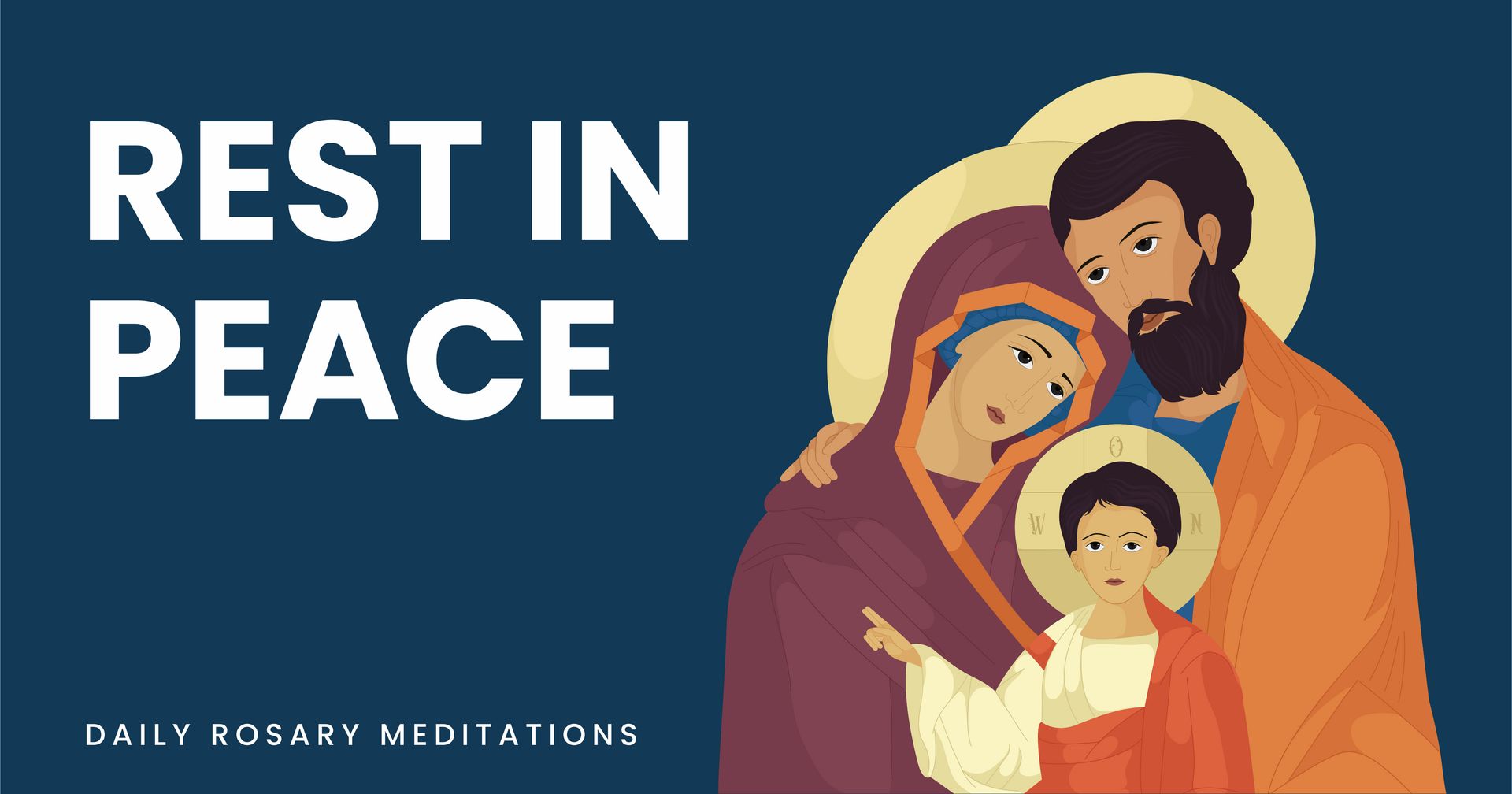- Daily Rosary Meditations
- Posts
- Rest in Peace
Rest in Peace

Episode Transcript
One
The Peace of the Tomb
In the beginning, when God made the world for the first time, He rested on the seventh day from the work of creation. When Christ came, He came to the world to renew it, to make it again. And His work of redemption was completed on the cross. And when it was finished, they put Him in the tomb. And for a whole day, on Holy Saturday, the Seventh Day, Christ rested from His labors. He rested there, still and quiet and untroubled. He rested in peace. And when He came back on Easter Sunday, He brought with Him the peace of the tomb. When He saw the apostles, His first words were, “Peace be with you.” It was a peace that had come from His death.
It’s a strange fact that those who think about death are more peaceful, while those who try to ignore death are more anxious, always distracting themselves by busyness or entertainment from the thing they don’t want to face. So let’s think about death, about the peace of death, and see if there’s some way for us to acquire the peace of death while we’re still alive.
Christ is always our model, and on Holy Saturday, He’s our model of peace. So how can we imitate Him as He rests in peace?
Two
The Stillness of the Tomb
The first thing that comes to mind about death, about being laid out in a tomb, is the stillness. The casket doesn’t move. The grave doesn’t move. The body doesn’t move. Everything’s content to stay where it is.
After the Church went through its initial phase of persecution, when it settled down into a peaceful existence, monasticism began to flourish. In other words, men and women went out to monasteries where they could stay in one place their whole lives, living in cells not much larger or more decorative than tombs. Because that’s where they knew they could find peace, the way Christ was at peace in the tomb.
And what about us? Do we have the peace, the stillness, the stability of the tomb? Hardly. One of the defining characteristics of modern life is mobility and restlessness. People are constantly moving, constantly changing majors, changing jobs, changing spouses. When they’re not moving physically, they’re scrolling online, going from one website, or one video, or one link to the next.
It’s not a peaceful existence. So what can you do to make yourself more still? Less hurried? Less distracted? How can you imitate Christ at rest on Holy Saturday in His stillness?
Three
The Silence of the Tomb
The second feature of a tomb to consider is its silence. All was silent in Christ’s tomb on Holy Saturday. And the monks who seek for the peace of the Lord out in the monastery spend a great deal of their time in silence. Because silence is indispensable for peace. And it’s a measure of our lack of peace how little we can tolerate silence.
So many of us constantly have something playing in the background: TV, music, podcasts, news, our devices pumping out sound nonstop. Lot’s of us even need some kind of “white noise” to help us sleep. But distraction isn’t peace. Distraction is the fear of peace, which is very much linked to the fear of death. Both are born of the concern that, if we delve deeply into the reality of the world and the reality within ourselves, what we find won’t be good.
But it is good. Reality beyond the grave is good, because beyond the grave is God. And reality within ourselves is good, because within our selves resides God. And so we need more silence, much more, to enter into ourselves and find the God who dwells within. To prepare for death, for the grave, and be at peace with the God who is waiting for us there.
Four
The Non-Resistance of the Grave
Finally, when we die, we will finally stop having to resist and struggle. That’s what it means to rest. An inanimate object, like the corpse, doesn’t have to try to acquire things, doesn’t have to control things or try to prevent things from happening. The body in the grave has finally surrendered to the course of events. And so the body in the grave is at peace.
So too, the monks in the monastery, imitating Christ in the tomb, have created a life where they no longer have to acquire things, or prevent things or control things. They simply submit what their rule of life demands of them. They have surrendered, and they are at peace. In fact, the Benedictines put the Latin “PAX,” or “peace” as their motto in prominent places throughout their monasteries.
So what are we trying to control? What are we trying to acquire? What are we trying to prevent? Is there any way we can do that less? Is there any way we can struggle against the course of events less? Is there any way we can resist less? And so imitate Christ in the tomb, and receive His peace?
Five
Newness of Life
We can’t end this meditation on Christ in the tomb without remembering that Christ in the tomb is not the end. Death is not the goal, it’s the gateway. Christ’s stillness and silence and non-resistance in the tomb is the preparation for a new kind of life, a life characterized by divine peace. And our imitation or Christ in the tomb is so we can better imitate Christ Resurrected. As St. Paul says, we are united with Christ in death that we might rise again with Him in newness of life.
We always have to die to an old kind of life if we want to begin a new kind of life. A child lives a richer life than an infant, but the child has to give up breastfeeding and being carried everywhere. An adult lives a richer life than an adolescent, but an adult has to give up being taken care of by others so that he can rise to the maturity of taking care of other people himself. And resurrected, glorified life is immeasurably richer than natural, earthly life, but we have to give up our noise and our restlessness and the constant struggle born of our self-will. And when we give it up, the peace of Christ’s tomb will be the peace we bring with us to the glory of everlasting life.
Prayer Intentions
Here are some recent prayer intentions from our community:
Please pray healing for my Brother-in-law, Tim. His kidney cancer has spread into his brain, and the side effects of the radiation treatment has caused some issues with walking, memory, and headaches. - Shelley
Praying for the conversions of my family...
Pray for me, I am experiencing a bit of dark night of the soul... - Debbie
We invite you to submit your own prayer intentions by replying to this email, or you can share them directly in our app. Your requests will be shared anonymously, allowing our community to come together in prayer and support for one another.
Download our App!
Join our prayerful community anytime, anywhere! Click the button below to access daily meditations, submit prayer intentions, and grow in faith with us.
What did you think of today's meditation? |
If you enjoyed this meditation, subscribe below.



Reply